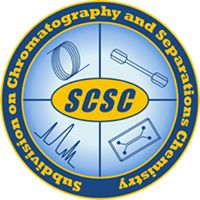The LCGC Blog: Miniaturized Chromatography—The Next Big Idea
In any given community, on rare occasions, leaders converge on a big idea. The development of such an idea alters the course of the community, in a way that is meaningful if it is lasting. It is my belief that the collective chromatography community is currently converging on a big idea.

This blog is a collaboration between LCGC and the American Chemical Society Analytical Division Subdivision on Chromatography and Separations Chemistry.
From Incremental Changes to a Big Idea
As one would expect of any technology, each passing year shows some incremental advantage in chromatography.The realization of these advantages comes through an incredible amount of carefully thought-out and conscientious effort. Some areas where we consistently see incremental improvement in chromatography are
- speed
- sensitivity
- ease of use
- the reduction of costs and complexity
- and otherwise, the democratization of our field.
We are now at a time, however, when our focus should no longer concern itself with the incremental, and instead focus on a big idea that will alter the course of chromatography forever. This big idea is, without a doubt, miniaturization.
The Trend Toward Miniaturization
The trend toward miniaturization is visible in many areas of the wider world.Items such as our wristwatches and cellular phones take up newly developed technology, allowing them to be trimmed down without sacrificing qualities consumers have come to expect, and subsequently demand. Chromatography systems, accessories, and workflows are all following suit; this has taken some years to build, but is now advancing rapidly. Large and small companies have joined in this effort. While common themes are evolving, there is no shortage of different approaches to solving the multitude of problems created, as well as opportunities afforded by, miniaturization.
Challenges in Miniaturization
To miniaturize chromatography, the engineering and fabrication feats are tremendous. For instance, as sample pathways, tubing, and systems narrow and shrink, so do the design tolerances. To address this challenge, many companies are returning or keeping manufacturing in their home countries: Instruments are built by hand in high-end facilities by qualified engineers—a job that is typically shopped out to overseas partners for the majority of contemporary chromatographic instruments.
Another big obstacle is the bureaucratic administration of large agencies, such as the Food and Drug Administration (FDA) and Environmental Protection Agency (EPA), governing the most productive analytical laboratories. These organizations are, by nature, cautious, and often seemingly resistant to “course correction.” Novel instruments are less likely to serve these controlled environments, which boast the highest density of instrumentation—thus slowing innovation.
Advantages Overcome Challenges
All the obstacles in the world, however, cannot stop innovation, but merely slow its inevitable march. Some advantages are so evident and incredible that they overcome even the most vigorous resistance. One such advantage of miniaturized chromatography—as simple as it is powerful—is that as systems reach a tenable size for overnight shipment, the need for a traditional and cumbersome service network naturally falls away—because if you need instrument repair, you can quickly receive a stand-in instrument to use while you send out your broken unit for repair, without needing to have a service engineer visit your site. This change has the potential to halve the cost of running instrumentation in the field.
Another game-changing advantage of miniaturization is that smaller channels and sample pathways dramatically decrease the need for gasses, solvents, and power requirements. This feature further allows a more portable or mobile paradigm to evolve, while lowering costs and waste.
Current Examples of Chromatography Miniaturization
While there isn’t enough space here to go through all the fantastic attempts to miniaturize chromatography instruments, I would like to highlight a couple of my favorite approaches for your consideration. First, I need to state that my opinion in no way reflects on my employer, this publication, nor any group to which I belong.
A favorite of mine is the approach being taken by Axcend, which offers the most portable gradient liquid chromatography (LC) system the world has yet seen. Their instrument’s toolless design, rechargeable battery, and light weight make it compatible with almost any field application.
Another excellent offering in this field is the miniaturized gas chromatography (GC) instrument made by Lucidity. This elegant solution to an overcrowded benchtop sits on roughly a third of the space used by a traditional kit while not sacrificing any meaningful performance. Set up and run, and swap columns and consumables like a pro, from your first day. They don’t lock you into any consumables and offer the best of consumer-driven business practices that you have come to expect from other areas of life.
The best of our companies operate by standing in their customers’ shoes, solving problems as if they were their own. Innovation rooted in holistic long-term problem-solving that lovingly draws from the learnings of the previous step inspires enthusiasm for advancement from the greater community—one in which I am thrilled to be taking my part.
Jonathan Edelman

Jonathan Edelman began his career as an analytical chemist in the pharmaceutical industry. Inspired by his long-standing love of science and natural ease with sales and marketing, he is currently working to seek strategic business solutions in the chromatography field. Currently, he works for Restek and volunteers his time to a wide variety of nonprofit organizations within the chromatography community. Edelman serves as the treasurer of the ACS SCSC, in addition to serving as Chair of the Organizing Committee for the ISCC/ GCxGC 2021 conference, Executive Committee Person at the Chromatography Forum of Delaware Valley, president emeritus of the Washington Chromatography Forum, and founder and president of the Separation Community Mixer.

This blog is a collaboration between LCGC and the American Chemical Society Analytical DivisionSubdivision for Chromatography and Separations Chemistry (ACS AD SCSC). The goals of the subdivision include:
- promoting chromatography and separations chemistry
- organizing and sponsoring symposia on topics of interest to separations chemists
- developing activities to promote the growth of separations science
- increasing the professional status and the contacts between separations scientists.
The LCGC Blog: Historical (Analytical) Chemistry Landmarks
November 1st 2024The American Chemical Society’s National Historic Chemical Landmarks program highlights sites and people that are important to the field of chemistry. How are analytical chemistry and separation science recognized within this program?
